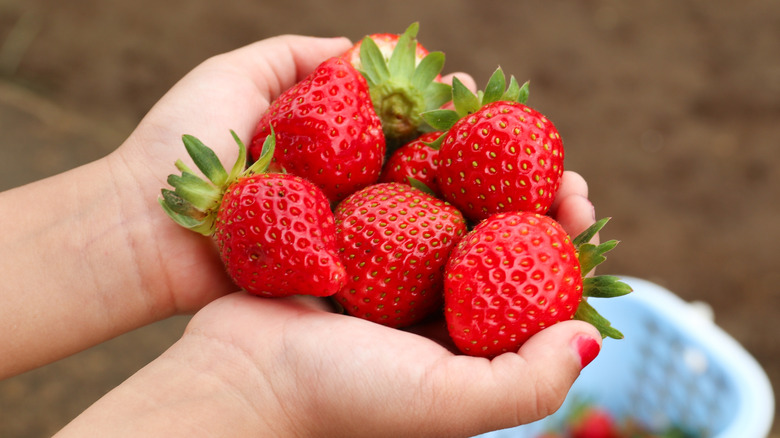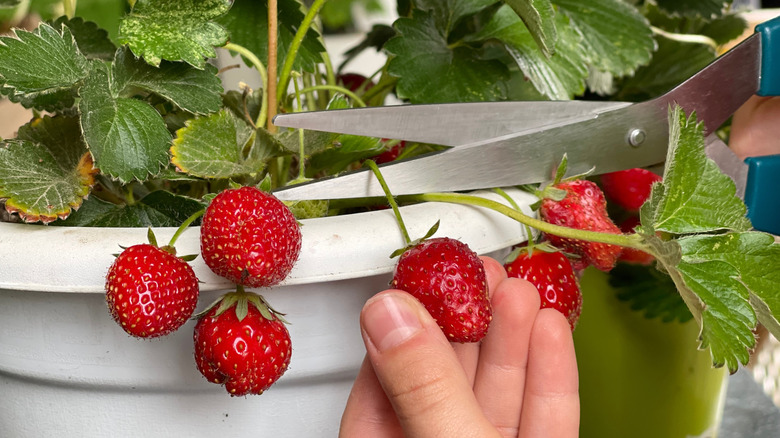The Best Way To Harvest Strawberries For Juicy & Delicious Fruits
When it comes to growing strawberries, timing your harvest is the key to flavor. The most flavorful fruits are picked when they're fully red, firm but not hard, and free of discolored areas. Harvesting too early results in bland, underripe berries. Left on the vine too long, berries will become soft and more likely to be affected by fruit rot. It's important to remember that strawberries do not continue to ripen after they've been picked, so it's best to check daily during peak season.
There is a best method for harvesting strawberries. When they are ready to be picked, a ripe strawberry will easily separate from the plant with minimal pressure, but it's best not to tug. Pulling can damage the delicate fruit and the plant itself. Gently pinch the stem between your thumb and forefinger about 1/4 inch above the cap, then twist to release the berry.
Handle your strawberries carefully and place them in shallow containers to avoid crushing them. Early morning is the ideal time to harvest, when the berries are cool and firm. Rinse just before eating to avoid introducing moisture that can lead to mold.
Tips to extend your strawberry harvest season
To keep the strawberries coming, harvest regularly. Picking ripe berries every day or two increases the bounty from your garden and helps avoid pests and rot that can come with overripe fruit left on the plant. Even better, grow even more berries by harvesting frequently and growing a mix of June-bearing, everbearing, or day-neutral varieties.
June-bearing strawberries offer one large crop in late spring or early summer, depending on where you live. They fruit all at once over a few weeks, so they should be checked daily during that time to not miss any. Everbearing strawberries will give two or three smaller harvests throughout the growing season, usually early and midsummer, then again in early fall. Harvesting is more spread out, but the plants should still be checked every couple of days. Day-neutral strawberries will produce fruit throughout the growing season and should be checked often to not miss a ripe berry.
Growing and caring for any variety of strawberry is similar. Plant in well-drained soil in full sun. Space plants 18 to 24 inches apart to allow for the many runners that will grow and fill the space between the plants. Mulch with straw or pine needles to keep fruit off the soil and prevent rot. This also helps regulate soil moisture, which is important for sweet, plump fruit. Strawberries do not grow well with any weed pressure, so be sure to keep the bed weed-free.
For gardeners with limited space, strawberries grow well in containers or hanging baskets. Day-neutral types are best for containers because they do not produce as many runners. These runners that would be unable to take root in a container or hanging basket will weaken the main plant over time. They should be removed as they appear.

